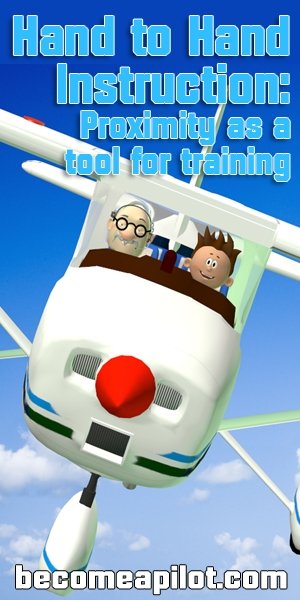 Airplanes with side-by-side seating offer instructors a wonderful opportunity to apply a unique teaching technique. Your seating proximity allows you access not only to your student’s flight controls, but to their arms and legs. Why not take advantage of this?
Airplanes with side-by-side seating offer instructors a wonderful opportunity to apply a unique teaching technique. Your seating proximity allows you access not only to your student’s flight controls, but to their arms and legs. Why not take advantage of this?
I discovered how useful this technique was with a student who was reluctant to push the throttle in for takeoff. I said, “Betty, push the throttle in all the way.” She inched the throttle forward at a snail’s pace. “I’m afraid I’ll hurt the pistons,” she replied. I looked over at her and said, “Don’t worry, this is a rental and rental pistons have no feelings. Now, move that throttle forward, OK?” Finally, I just reached over, and put my left hand around her wrist and pushed in at the appropriate rate. Her first comment was, “Oh, so that’s how to do it.” From that moment on I realized that mere words often can’t convey what the physical sensation of pressure can.
It’s one thing for students to follow you through a maneuver with their hands on the controls. A good practice, indeed. But they can’t accurately sample the control pressures involved because you’re the one applying the pressure. Using their wrist as a handle, they obtain the tactical sensation of pressure resulting from their hand contacting the flight control.
Try this technique the next time your student is having trouble maintaining level flight. Place your hand on their wrist and level the airplane for them. They’ll quickly develop a sense for the pressures involved.
This technique becomes immensely useful in preventing students from over controlling during landing. I’ve guided students through the approach, roundout and flare with my left hand controlling the aileron and elevator through their wrist.
You can even apply palm pressure to a student’s knee to initiate rudder movement. During flight, students should have their heels on the floor and apply rudder pressure with the balls of their feet. Therefore, a slight push down and forward on the knee moves the ball of the foot forward. Fortunately, it’s right rudder that’s most often needed and that’s the leg that’s easiest to get to.
One word of caution. Always make sure you obtain the student’s permission before pushing on any part of their body. Let the student know what you’re going to do and demonstrate how you’ll do it. Do this and you’ll only push a wrist and never push your luck.
